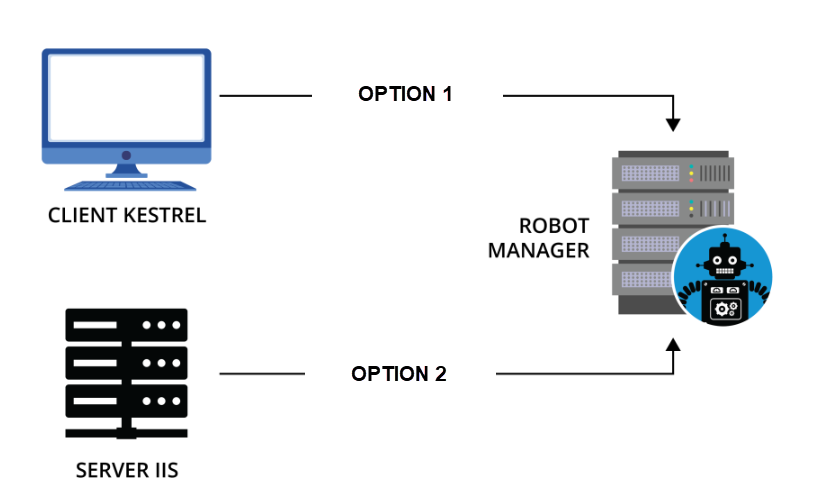
Package storage and supporting applications
Package Server and platform repositories
Before you can manage your robot in Pega Robot Manager™, publish your package (a collection of deployment files) to the Pega Package Server™ from Pega Robot Studio. When you publish a package from Pega Robot Studio, the package is sent to the Pega Package Server, and the associated package metadata is sent to Pega Robot Manager.
The Package Server stores the packages with associations to the package metadata in Pega Robot Manager. The metadata tells Pega Robot Manager the package version, Pega Robot Studio version, and configuration information about the package. This information is used when assigning a package to a robot. When the robot is started, the Pega Synchronization Engine retrieves the package assignment from Pega Robot Manager and the package file from the Package Server.
Check your knowledge with the following interaction.
Package installation requirements
Before you install the Package Server, determine where you want to host your deployment package files. You can host your deployment package files on a web server that supports IIS or host your deployment package files on a client machine that supports Kestrel.
The Pega Robot Runtime download includes the Pega Package Server. You can install this application on any machine that resides in the network of your organization and meets the minimum installation requirements. After you determine where to install the Package Server, install the following prerequisite software:
- For Kestrel, install the Microsoft .NET Core 2.2.3 Runtime and Hosting Bundle for Windows.
- For IIS, add the SSL certificate to the local machine and place the certificate in the certificate store.
Pega Package Server and Pega Synchronization Server
The Pega Synchronization Server allows you to select the download that you want to install as the download becomes available.
The Synchronization Engine is a client-side application that communicates with the Synchronization Server to manage your Robot Runtime installations. Built-in security ensures that only Pega-certified content is delivered using this system.
The Synchronization Server acts as the product repository for all versions of Pega Robotic Automation software. The software, beginning with the 19.1 release, comprises the following products that you can update independently of one another:
- Pega Robot Runtime
- Pega Native Foundation
- Pega Synchronization Engine
- Pega RPA Service
Install the Synchronization Server on a client machine or a server separate from the Pega Robot Manager. The Synchronization Server installation files and required components are available in the Pega Robot Runtime installation ZIP file in the ServerInstalls folder. You can download the Pega Robot Runtime installation files from Digital Software Delivery. For more information, see the Synchronization Server User Guide on Pega Community.
As an alternative to the Pega Package Server, Pega Platform™ provides repositories to store automation package information. By using Pega Platform repositories for automation package storage, you reduce the need for a separate Package Server, saving effort and money. The ability to use package repositories in lieu of the Pega Package Server is a new feature available in version 8.5. For additional information on how to set up and use the repositories please visit Storing robotic automation packages in Pega Robot Manager.
Check your knowledge with the following interaction.
This Topic is available in the following Module:
If you are having problems with your training, please review the Pega Academy Support FAQs.
Want to help us improve this content?

